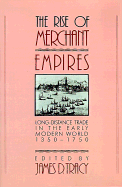Book contents
- Frontmatter
- Contents
- Preface
- Maps
- Introduction
- 1 Structural changes in European long-distance trade, and particularly in the re-export trade from south to north, 1350–1750
- 2 The growth and composition of trade in the Iberian empires, 1450–1750
- 3 The growth and composition of the long-distance trade of England and the Dutch Republic before 1750
- 4 France, the Antilles, and Europe in the seventeenth and eighteenth centuries: renewals of foreign trade
- 5 Productivity, profitability, and costs of private and corporate Dutch ship owning in the seventeenth and eighteenth centuries
- 6 The Dutch and English East India companies compared: evidence from the stock and foreign exchange markets
- 7 World bullion flows, 1450–1800
- 8 Merchant communities, 1350–1750
- 9 Economic aspects of the eighteenth-century Atlantic slave trade
- 10 Marginalization, stagnation, and growth: the trans-Saharan caravan trade in the era of European expansion, 1500–1900
- 11 The “decline” of the central Asian caravan trade
- 12 Merchant communities in precolonial India
- 13 Merchants without empire: the Hokkien sojourning communities
- Index
9 - Economic aspects of the eighteenth-century Atlantic slave trade
Published online by Cambridge University Press: 01 June 2011
- Frontmatter
- Contents
- Preface
- Maps
- Introduction
- 1 Structural changes in European long-distance trade, and particularly in the re-export trade from south to north, 1350–1750
- 2 The growth and composition of trade in the Iberian empires, 1450–1750
- 3 The growth and composition of the long-distance trade of England and the Dutch Republic before 1750
- 4 France, the Antilles, and Europe in the seventeenth and eighteenth centuries: renewals of foreign trade
- 5 Productivity, profitability, and costs of private and corporate Dutch ship owning in the seventeenth and eighteenth centuries
- 6 The Dutch and English East India companies compared: evidence from the stock and foreign exchange markets
- 7 World bullion flows, 1450–1800
- 8 Merchant communities, 1350–1750
- 9 Economic aspects of the eighteenth-century Atlantic slave trade
- 10 Marginalization, stagnation, and growth: the trans-Saharan caravan trade in the era of European expansion, 1500–1900
- 11 The “decline” of the central Asian caravan trade
- 12 Merchant communities in precolonial India
- 13 Merchants without empire: the Hokkien sojourning communities
- Index
Summary
In recent decades there has been a fundamental change in the study of the Atlantic slave trade. From almost total neglect, the trade has become an area of major concern to economists and historians who have dedicated themselves to analyzing the African experience in America. Especially since the publication by Philip Curtin of his masterly synthesis The Atlantic Slave Trade: A Census in 1969, a massive amount of archival research has resulted in publications both of collections of documents from all the major archives of Europe, America, and Africa and of major works of synthesis on the demography, politics, and economics of the slave trade.
In this essay, I would like to concentrate on those aspects of the trade most directly related to its economic organization and impact on world trade and markets, including that of the international market in labor. This will involve a study of such questions as the relative importance of the trade in African slaves within the total movement of goods and services across international frontiers; the relative costs and benefits of the trade in slaves to its various national participants; and the mechanics of the trade in terms of goods exchanged and routes developed. Finally, given the unique commodity being shipped by the slave traders, it is essential to examine the demographic characteristics of the trade and its impact on American and African labor markets.
- Type
- Chapter
- Information
- The Rise of Merchant EmpiresLong Distance Trade in the Early Modern World 1350–1750, pp. 287 - 310Publisher: Cambridge University PressPrint publication year: 1990
- 5
- Cited by

